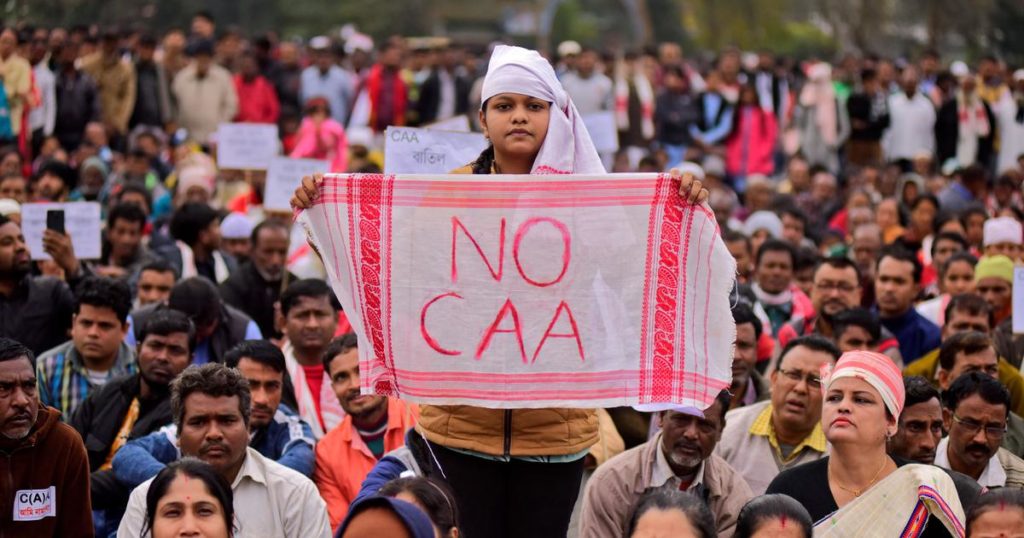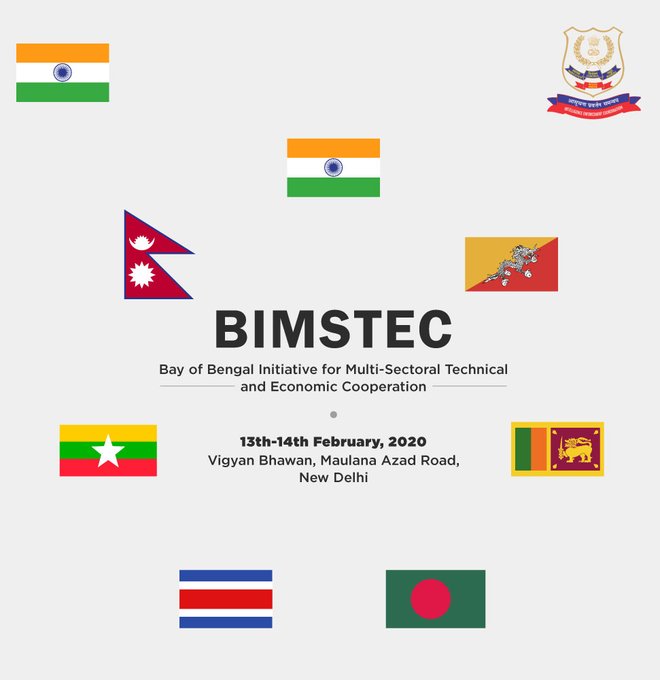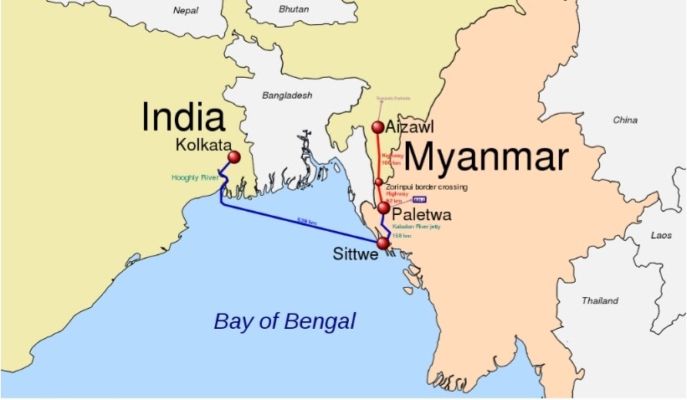India’s North Eastern Region (NER) includes the states of Assam, Arunachal, Manipur, Meghalaya, Mizoram, Nagaland, Pradesh, Sikkim and Tripura. Together, they represent a distinct geographic, cultural, political, and administrative entity. Ethnically and culturally, this part is more connected to Tibet and South-East Asia. Part of the Eastern Himalayas, the area is also of geo-strategic significance as it shares 90% of its borders with five countries Bangladesh, Bhutan, Tibet Autonomous Region of China, Myanmar and Nepal. It is connected to India only by a narrow piece of land called the Siliguri Corridor, sometimes referred to as the ‘Chicken’s neck’.
This far-away part of the country has been neglected by New Delhi. Seventy years after independence, these states still lack basic services, including health and education. They only occasionally get news coverage highlighting the human rights violations meted out to the civilian population during the years of conflict. The Union of India is a federation of states, but the central government dictates much of the policy in this region, and colonial style resource extraction has continuously expanded through mining, hydroelectric power plants, and military infrastructure, while basic necessities remain unmet. While the brutal repression in Indian Held Kashmir cannot be supressed, the rule of law in the seven sisters is akin to a virtual police state under the façade of “democracy”. Given that at least 3 of these States have majority Christian population, one wonders where are the Christian zealots who rail endlessly against Muslims? This has created multiple problems and raised constant protest from the local population including the demand of separation from India and independence.
The cause of the situation was British colonial policy that was bent on exploiting the resources of the countries they occupied. The integration of the North Eastern Region into British-India was abrupt, with no prior history of contact to India. The states were demarcated into ad-hoc units for administrative convenience, principally economic and resource planning and security calculations. After Indian Independence from British Rule in 1947, the North-eastern region of British India consisted of Assam and the princely states of Manipur and Tripura. Subsequently, Nagaland in 1963, Meghalaya in 1972, Arunachal Pradesh in 1975 (capital changed to Itanagar) and Mizoram in 1987 were formed out of the large territory of Assam. Manipur and Tripura remained Union Territories of India from 1956 until 1972, when they attained fully-fledged statehood. Sikkim was integrated as the eighth North Eastern Council state in 2002. These dates listed like this conceal the struggle that the local, mostly tribal population had to fight in order to achieve separate units and a certain autonomy for their respective people. The region’s own politics and the political aspirations of the tribal people were neglected by New Delhi, partly because of their small numbers and the fact that they were far away from India proper. India is trying to deal with the unrest and partly armed insurrection by imposing controversial laws such as the Armed Forces Special Powers Act 1958 (AFSPA), which allows armed personnel to conduct arrests, searches and encounters without a warrant. The actions permitted under the Act are not subject to the law of the land and violations cannot be pursued in the courts. Currently, AFSPA is enforced in Arunachal Pradesh, Assam, Manipur, Meghalaya Mizoram and Nagaland, and has not been conducive to development, peace or stability.
The insurgency and the consequent counter-insurgency measures became a part of everyday life. The attendant human rights violations, combined with sluggish economic growth in the region, has paralysed development, further enabling illicit economic enterprises in an already militarised zone. The response of the central government has included ill-considered approaches to conflict management and the injection of development funds into the oil, tea and coal sectors, all of which are concentrated on resource extraction. Together, these have nurtured a climate of ‘sustained low intensity conflict’, which allows many activities to fly under the radar and for government officials, political elite and armed rebels to control their respective sub-states.

The pervasive anger against the 2020 Citizenship Amendment Act (CAA) in Assam, has sustained the separatist narrative and has not lost its edge. That is not to say the Indians have not tried, the signing of the Bodo Accord in February 2020 is an example. New Delhi gave in to certain demands of the All-Bodo Students Union and various factions of the National Democratic Front of Bodoland (NDFB), both militant outfits. Short of statehood, New Delhi created the Bodoland Territorial Region, effectively pitching the nationalist Assamese against Bodo groups. Even the United Liberation Front of Assam (ULFA), which has a history of factionalism, is now after signing of the Assam Accord in 1985 part of India’s political tapestry rather than a disconnected whole with a distinct demographic constituency seeking separation. In Manipur, which houses numerous insurgent outfits, there is hardly any group that does not have a patron in Imphal or New Delhi. In fact, akin to the organized crime-politics nexus in other parts of India, these groups constitute the intrinsic underbelly of India’s political landscape in the Northeast, instead of being independent actors that truly seek separation from India.
Such comprehensive and undemocratic connections between India’s political parties, security agencies, and the Northeast’s armed actors is a house of cards that can easily be disrupted. Moreover, given India’s fears about China’s support for any Indian rebel outfit, many of these groups often simply exploit Beijing’s openness to “do business” with them as a tactical tool to exert pressure on New Delhi without China’s knowledge or approval.
But in India’s North-East as elsewhere life never stands still and changes have been quietly coming. India’s road network has benefited greatly from the the National Highways Development Project (NHDP). A Special Accelerated Road Development Programme for North East (SARDP-NE) for the development/improvement of more than 10,000 km roads in the NE states has been formulated. The Ministry of Road Transport and Highways has been paying special attention to the development of national highways in the region and has assigned 10% of the total allocation of funds for the NE region.

Another major aim of surface infrastructure projects in the NE states is to be linked up with parallel developments in the neighbouring countries, particularly with Bangladesh. The restoration and extension of pre-partition land and river transit routes through Bangladesh has been recognized by India to be vital for the transport infrastructure in NE states. However, this is not looked at favourably in Bangladesh. Other international cooperation, such as, revival of the Stilwell road connecting Ledo in Assam to northern Myanmar and extended up to Kunming in south-eastern China, Kaladan Multimodal Transit Project and Trans-Asian Railways, could open up an eastern window for the land-locked NE states of India. Various regional initiatives, such as, the Bangladesh China India Myanmar (BCIM) and Bay of Bengal Initiative for Multi-Sectoral Technical and Economic Cooperation (BIMSTEC), India Myanmar Thailand Trilateral Highway (IMTTH) project to link the markets of South and Southeast Asia, are in very initial stages.
Despite of serious political problems within India and between India and China and others, today even India cannot disregard global and regional trends and the need to put one’s economy in order. Ethnic, cultural and autonomy problems are being defused if not buried when the economic and living conditions of the people are improving.
Contributed by:

Former Professor of South Asian Studies, Humboldt University, Berlin and Editor of the Defence Journal and a Consultant to Pathfinder Group).






Dear Sir,
India has succeeded in integrating its North-East region with the rest of the Country far better than expected by even the most fervent optimists. This is because the Indian Constitution gives 70% of administrative and financial Powers to the States, as long as ‘Peaceful Conditions’ prevail! Today the Insurgent Outfits in the North Eastern States have lost their mass support and have become considered as ‘Extortionist’ Organisations, which maintain their fighting cadres deep in the jungles of neighbouring Burma by paying bribes to the local Military commanders there!
When America expanded West in the 19th century, it was considered as a waste of the taxpayers money by the influential financial circles there at that time. But the dividends started coming almost 80 years later! Similarly during the early 1930s, it was expected by most observers that when India gains ‘Dominion status’ in the future, it would be the Southern region which would secede as they are a separate culture and proud linguistic Group compared to the ‘show-off’ and ‘bullying-type’ behaviour exhibited by the Urdu/Hindustani speaking Elites of North India. But surprisingly, Nehru’s far reaching vision of ingraining democratic values and respect for the Ballot and the Judicial System has found people from South India to become the major driver of a Nationalistic and Tolerant/Ethical outlook in the India of today. So the revving up of the economic transformation in India’s Eastern region in conjunction with friendly neighbours is a sure process which is taking shape. Many would be surprised to know that 90% of India’s trade with its Eastern Neighbours is taxed at less than 5% in customs duties, and this too is mostly levied to support the Border Infrastructure for emerging trade! Where there is democracy, economic factors surely overrides all other prejudicial hindrances in the long run.